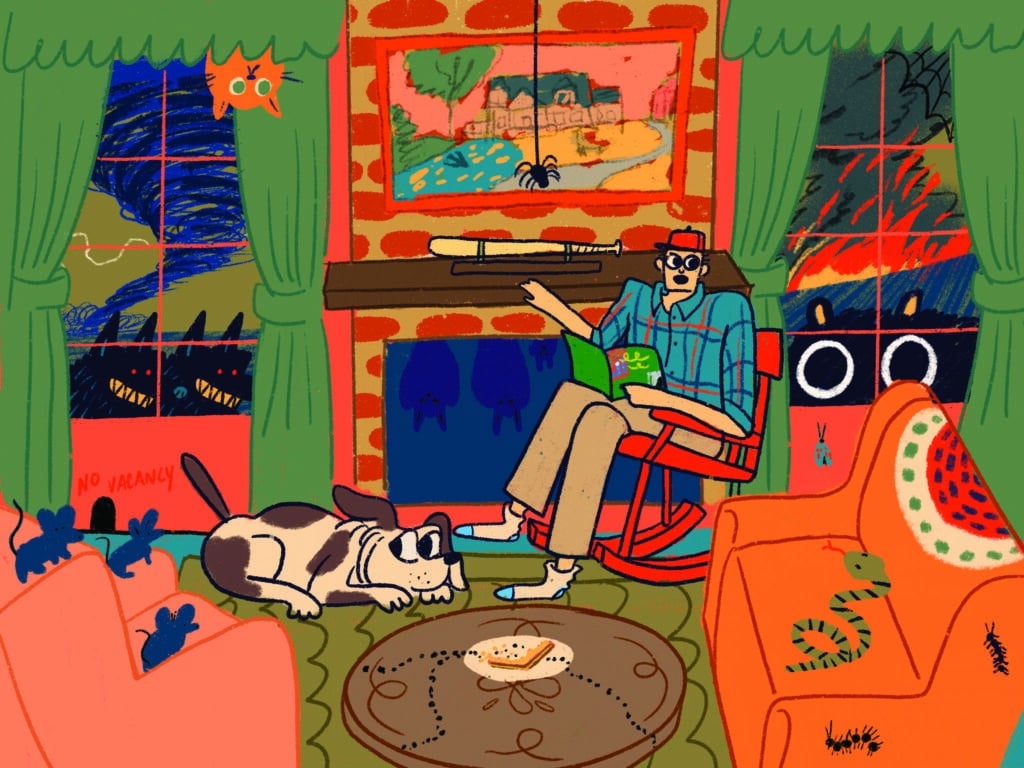Missouri Life Musings columnist Ron Marr battles critters set on ruining his truck. Unlike nature featured in glossy vacations guides, Ron’s experience with Mother Nature is decidedly not that great. At least the mice are happy.

NATURE IS BEAUTIFUL, but it’s also rude and bereft of social graces. Nature is tranquil and bucolic, except when it’s being loud and destructive. Nature exists in a state of balance, at least on those days when it’s not descending into chaos.
Having lived most of my life in the far boonies, I’ve learned that folks who wax the most loudly about living in harmony with nature have usually never lived in nature. Oh sure, they visit it on occasion, but they’re largely unaware of the challenges inherent to cohabitating full-time with things that crawl, chew, bite, sting, infest, and destroy.
Droughts, floods, fires, and twisters are rarely featured in the glossy vacation guides. Neither are anecdotes regarding dog-killing coyotes, leprosy-prone armadillos, rabid skunks, black vultures, noxious weeds, ticks, ants, and an infinite panoply of rodents large and small.
This latter group has been making my life—and bank account—miserable for over two years. The rats and mice have been snacking on the electrical wiring in my vehicles with gusto, costing me two grand in repairs so far. Apparently, the insulation protecting auto wiring is now made with plant-based materials (instead of our old friend, Mr. Petrochemical) meaning that it’s become less an electrical transmission system and more the rat equivalent of Pringles.

RATTED OUT
[email protected]
People claim there are ways to keep mice out of a car. They’re lying. Ultrasonic emitters and strobe lights are worthless; they just make the mice think they’re at a disco. Poison might be effective, but I can’t use it because (A) my crazy dogs would mistake it for Milk Bones, and (B) there’s not enough poison in Missouri to kill the ravenous horde of rodents residing in the hundreds of acres of bean fields surrounding my house. I considered liberating a herd of barn cats from local animal shelters, but I’m not sure I could convince any of them to live in my car’s engine compartment.
I ordered some Kness Ketch All wind-up mousetraps. Farm folk know all about these. We call them “Tin Cats” and they’ve proven effective in barns and outbuildings for about a century. Outside and under a car though, the mice simply spray-paint profane graffiti on their sides.
Finally, at wit’s end, I stopped parking in the grass and called the local quarry to come coat my driveway with a thick layer of gravel. I also ordered some overpriced spray gunk, whose dubious claim was that it contained ingredients rodents hate. The ad for the juice claimed that if you doused your engine and wiring weekly, you’d stay rat free.
I can’t say that these efforts were totally useless—I did notice a little less wiring damage after regular spraying—and my last mechanic’s bill to fix the car was under $200 (about half the usual fee). Also, the mice left a note saying the gravel is very attractive.
So now, I’m concocting my own antirodent recipe, I’ve just mixed up a horrible smelling, viscous gallon of Mickey-deterrent spray containing peppermint oil, vinegar, and eight ounces of ghost pepper sauce. Ghost peppers are reputed to be something mice can’t stand—one drop will burn the tongue plum out of your head—and I read a university study stating that Montana ranchers are spreading them around their wheat granaries to keep out vermin.
I have no doubt this experiment will fail miserably and fully expect the rat patrol to politely knock on my door with a request. “Thanks for the spicy salsa,” they’ll say, “but it seems you forgot the chips.”
Read more by Missouri Life, columnist, Ron Marr, here.
Article originally published in the January/February 2024 of Missouri Life.
Related Posts
Ron Marr: Not Ready For Prime Time
Missouri Life columnist Ron Marr is not ready for prime time. He misses the Sears and Montgomery Ward cataloges and muses on what “Black Friday'' really means. Maybe we should all consider what the holidays are really about.
Ron Marr is Too Poor To Pay Attention
Missouri Life columnist Ron Marr fills us in on what made him happy back in 2007. As you can imagine one of those things are his dogs which is still the case today. As his birthday approaches, find out what else Ron was waxing philosophical about 16 years ago.
Ron Marr Vs. the Smartphone
Columnist Ron Marr prefers to keep things simple, so when faced with the necessity of getting a smartphone, he was understandably reluctant. Has technology-averse Ron learned to embrace his fancy new device or will he hang up the phone?



